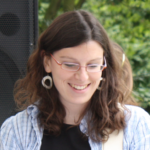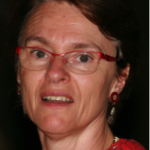Link to Pubmed [PMID] – 32900801
Link to DOI – e01559-2010.1128/mBio.01559-20
mBio 2020 Sep; 11(5):
Clostridioides difficile is a major cause of diarrhea associated with antibiotherapy. After germination of C. difficile spores in the small intestine, vegetative cells are exposed to low oxygen (O2) tensions. While considered strictly anaerobic, C. difficile is able to grow in nonstrict anaerobic conditions (1 to 3% O2) and tolerates brief air exposure indicating that this bacterium harbors an arsenal of proteins involved in O2 detoxification and/or protection. Tolerance of C. difficile to low O2 tensions requires the presence of the alternative sigma factor, σB, involved in the general stress response. Among the genes positively controlled by σB, four encode proteins likely involved in O2 detoxification: two flavodiiron proteins (FdpA and FdpF) and two reverse rubrerythrins (revRbr1 and revRbr2). As previously observed for FdpF, we showed that both purified revRbr1 and revRbr2 harbor NADH-linked O2- and H2O2-reductase activities in vitro, while purified FdpA mainly acts as an O2-reductase. The growth of a fdpA mutant is affected at 0.4% O2, while inactivation of both revRbrs leads to a growth defect above 0.1% O2 O2-reductase activities of these different proteins are additive since the quadruple mutant displays a stronger phenotype when exposed to low O2 tensions compared to the triple mutants. Our results demonstrate a key role for revRbrs, FdpF, and FdpA proteins in the ability of C. difficile to grow in the presence of physiological O2 tensions such as those encountered in the colon.IMPORTANCE Although the gastrointestinal tract is regarded as mainly anoxic, low O2 tension is present in the gut and tends to increase following antibiotic-induced disruption of the host microbiota. Two decreasing O2 gradients are observed, a longitudinal one from the small to the large intestine and a second one from the intestinal epithelium toward the colon lumen. Thus, O2 concentration fluctuations within the gastrointestinal tract are a challenge for anaerobic bacteria such as C. difficile This enteropathogen has developed efficient strategies to detoxify O2 In this work, we identified reverse rubrerythrins and flavodiiron proteins as key actors for O2 tolerance in C. difficile These enzymes are responsible for the reduction of O2 protecting C. difficile vegetative cells from associated damages. Original and complex detoxification pathways involving O2-reductases are crucial in the ability of C. difficile to tolerate O2 and survive to O2 concentrations encountered in the gastrointestinal tract.




